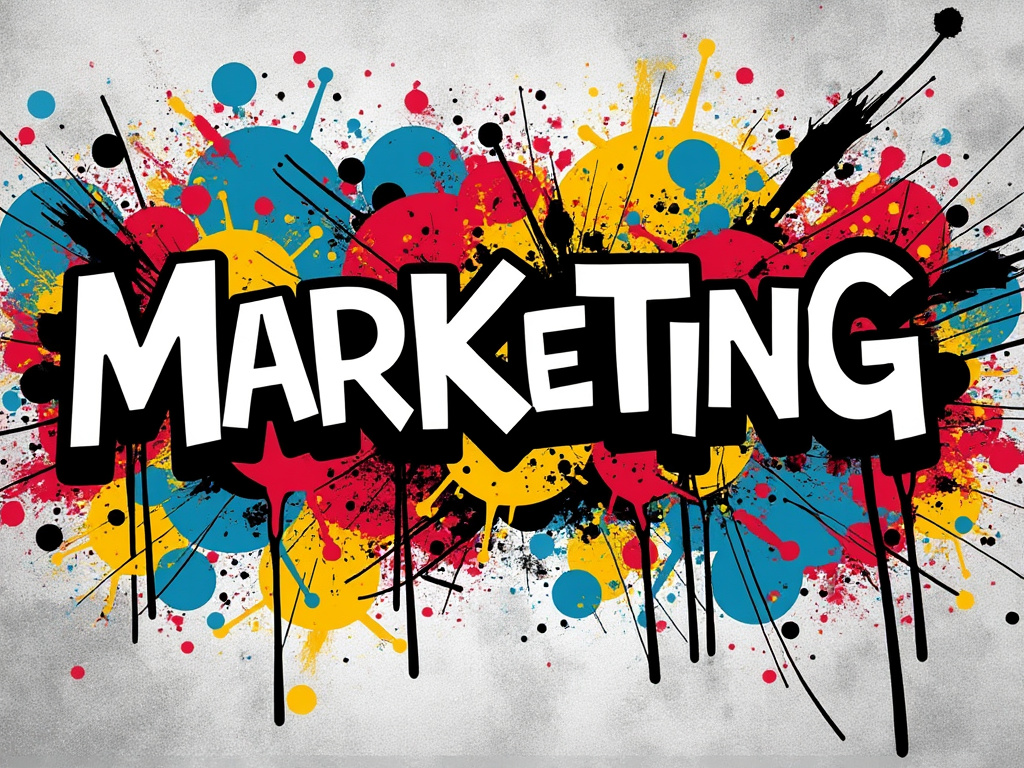It’s back to normal for you and your business 1:54 AM (last hour)

I’ve heard numerous business owners ask the same question recently. They want to know when things will go back to normal.
They’re asking the wrong question. Things can’t go back to normal.
- Time only moves forward. There’s no going back.
- Even if we invented a time machine, normal means something different to every person who asks the question.
But that’s okay. You can get things back to normal for you and your business. You won’t need a time machine. You only need to know what normal means for you and your business.
Back to normal
So, what does your version of normal look like? You’ll typically find it was the way things felt for you at a certain point in the past. Usually this is a sense of stability or security. Plus, a feeling that things were more predictable and consistent, less volatile.
Whatever normal means to you, write it down.

Once you have your very own, unique picture of what normal means for you and your business, you can start to build it. Your picture becomes the equivalent of an architect’s drawing. You use your picture to guide you, as you put the pieces into place, so your sense of stability, security and predictability are back to normal.
How?
While your competitors are waiting for the impossible, you get to work. You start by thinking what structures you will need to have around you, to create your feeling of normality. Here are some suggestions to get you started.
Stability and security: These are radically improved when you have the required finances in place. So, decide what’s your figure… how much would it take for you to have the same feeling of stability and security, as you had when things were normal? For extra security, add a zero! Next, get the best advice you can regarding building your wealth. Then, make a plan. How many additional sales do you need to make, or how many new clients do you need. Even better (because it’s faster and easier), what new products or services could you develop for your existing customers or clients.
Predictability: Even when things were normal for you, you couldn’t predict everything. No one can. However, you can predict your future even better than before, by making it happen. This means planning for it and following your plan. So, what would you love to happen over the next 30-days, 6-months, or the next year, 5-years or decade? Write it down. Make a plan.
This isn’t difficult. Seriously. You’re smarter, better looking and your jokes are funnier than people who’ve already done this.
There’s a fast and extremely valuable additional benefit from working on getting things back to normal. Very shortly after you begin making your plans, you’ll start to feel less stressed and more positive. You’ll have a greater feeling of control, because you’ll actually be in control. That feeling of positivity and being in control is invaluable. It provides you with increased optimism, greater enthusiasm and more energy.
Exactly what you need in order to succeed. (Hey, that rhymes)
Main image by Visual Tag Mx
It’s back to normal for you and your business was written by Jim Connolly and originally published on Jim's Marketing Blog
Marketing 101: Vigorous, written marketing 1 Apr 6:33 PM (3 days ago)

Most of the marketing copy I see is at least 75% too long. Overlong copy lacks impact. It also lacks clarity and fails to motivate prospective customers or clients.
I want to help you avoid this expensive mistake, which is why I wrote this for you.
Vigorous, written marketing
And it starts with one of the best-known quotes on the subject.
“Vigorous writing is concise. A sentence should contain no unnecessary words, a paragraph no unnecessary sentences, for the same reason that a drawing should have no unnecessary lines and a machine no unnecessary parts. This requires not that the writer make all his sentences short, or that he avoid all detail and treat his subjects only in outline, but that he make every word tell“.
Professor William Strunk Jr. – The Elements of Style.
The vigorous writing referred to here, is writing that is strong and full of energy. That’s the kind of writing that moves people to take action; to contact you, buy from you or hire you. It’s the kind of writing that gets the results you need.
How can you and your business benefit from the power of vigorous, written marketing?
The answer comes from understanding why the problem exists.
Google usually gets the blame
That’s because Google’s search algorithm rewards overlong, written content. It prefers 2500 words to 250. So, for over 20 years, online marketing writers have been rewarded for high word counts. That’s certainly not what’s needed for vigorous, written marketing.
But Google isn’t responsible for the wider problem.
Email marketing and off-line media is just as ruined by overlong content. Neither of those formats have ever required the writer to dance the Google dance.
The problem exists because most written marketing is created by people who lack sufficient training. It’s either written by business owners who ‘dabble’ or by below-par copywriters.
The solution?
The business owner wishing to switch to vigorous, written marketing has two options.
- Learn how to do it effectively.
- Pay someone who already knows.
How to decide?
- The cost (in time) of learning is considerable. It takes years of practice. However, you’ll start seeing improvements relatively quickly.
- The cost of hiring an expert is lower. And it’s a lot faster.
The price you pay for starving your business of vigorous, written marketing is far higher than either of those options. So pick one of them and run with it.
Photo by Cherrydeck on Unsplash
Marketing 101: Vigorous, written marketing was written by Jim Connolly and originally published on Jim's Marketing Blog
The horrible truth about marketing 31 Mar 10:07 PM (4 days ago)

There’s a balance required if you want to rise above the competition. Yes, you should strive to be the best provider you can be. But that’s only one side of the scales. You also need to be the best marketed.
Think about it. There’s a world of difference between being the best… and the best selling.
- The best selling album is never the best recorded album. It’s the best marketed album.
- The best selling movie at the box office is never the best produced movie. It’s the best marketed movie.
- And the best selling sportswear brand is never the best quality sportswear brand. It’s the best marketed sportswear brand.
You already know your best selling competitor is not the best quality competitor. It’s just their marketing that’s better. Note: this doesn’t mean their marketing is outstanding. It only means that they do more of the right things than their competitors. So, they get noticed more than you and/or they’re better at converting that attention into paying clients or customers.
Give your business the advantage
If you’re sick of watching competitors doing better than you, you need to decide to outperform their marketing, the way you already outperform their service. Because an average service that has great marketing, will always beat a great service that has average marketing.
The great news: If you decide to fight back, you’ll have better marketing and a better service. That’s an unbeatable combination. I’m telling you, your competitors won’t know what’s hit them.
The horrible truth about marketing was written by Jim Connolly and originally published on Jim's Marketing Blog
I have no clients. Seriously. Not even one! 25 Mar 7:33 PM (10 days ago)

It’a true. I don’t have any clients.
I also don’t have any customers, newsletter subscribers or readers. Oh, and I don’t have anyone connected to me on social media either.
I don’t have them. They’re not mine. Instead, I borrow them.
Brace yourself…
The same is true for YOU
Once we’ve earned the attention and trust of a new client, a new customer, a new subscriber or a new social media contact, it’s just the beginning. We must then work to keep on re-earning over and over again. The moment we begin to think otherwise, we risk becoming complacent.
Then we find out the hard way: complacency causes casualties.
For decades, sales trainers talked about the importance of closing the sale. Some still focus on it today, though only in high-pressure sales environments. Closing the sale was all about using psychological tricks to motivate someone to make a purchase.
Once this was achieved, the deal was closed.
Today, we know better.
Today, we know better. The most successful business owners don’t focus on closing the sale. Instead, they focus on opening the relationship. This is the mindset that says when a sale has been made, a new client acquired or a new subscriber gained, it’s only the start. It’s the mindset that compels us to continuously seek better ways to delight them. It’s the mindset that inspires us to raise the bar on what we deliver.
Let your competitors become complacent. Let your competitors assume that the people doing business with them, are their clients or customers.
But not you, my friend.
Instead, remain focused on opening relationships, being useful and constantly delivering better value.
I have no clients. Seriously. Not even one! was written by Jim Connolly and originally published on Jim's Marketing Blog
Finish strong 19 Mar 9:48 PM (16 days ago)
Finish strong. That’s solid advice for most things. But when writing persuasive marketing copy, the advice becomes explosive.
Most written marketing makes a powerful point, or a number of powerful points, but then fizzles out. The prospect is inspired to read past the powerful points. But when they reach the, fizzling-out copy, the impact on them is weakened. They go from hot to cold.
The key is to finish strong.
As Poynter’s Roy Peter Clark said: “Shakespeare did not write ‘The Queen is dead, my lord’. He wrote ‘The Queen, my lord, is dead'”.

By placing the emphatic word at the end of the sentence, the power of the overall message is greatly increased. It ends with a bang. That’s exactly the impact your marketing needs, in order to motivate your prospect, and compel them to take the next step; buy from you, call you, visit your store, make an enquiry, subscribe, etc.
Not just sentences
Finishing strong applies not only to your sentences. It equally applies to finishing the overall written marketing piece strong. This means making the last sentence in each paragraph as emphatic as possible, and the last paragraph itself, as emphatic as possible.
Think of it like this: You’re aiming for your words to build a crescendo of motivation, which inspires your prospect to take the next step.
What next?
Take a look at your written marketing and see if it finishes strong. Check the sentences, the paragraphs and the overall piece. If it doesn’t create a growing wave of desire, fix it. Otherwise you’ll continue to miss out on new sales or new clients. And none of us can afford that.
Finish strong was written by Jim Connolly and originally published on Jim's Marketing Blog
Read this and improve your advertising results, fast 15 Mar 7:33 PM (20 days ago)

A lot of small business owners spend a ton of money on advertising. Often with pretty poor results. So, I put this post together, to help you avoid the most common advertising mistakes.
Here they are in no particular order.
- You’re using brand advertising (ads that contain no obvious call to action), when you should be using direct response advertising (ads that contain a direct call to action). Almost all small businesses should use direct response.
- You’re advertising on a platform your prospects don’t use / don’t pay attention to.
- Your advertising is online, when it should be in print media. Or the other way around.
- You’re buying advertising on platforms that people don’t trust, rather than advertising on highly trusted websites, podcasts, etc.
- You’re advertising at the wrong time in your prospective client’s (or customer’s) buying cycle.
- You’re advertising to get maximum click-throughs, rather than targeted click-throughs from actual prospects.
- Your advertisements are not written by a proven copywriter.
- Your advertisements are bought based on what they cost, rather than their potential effectiveness.
- Your advertisements are in places where lots of your competitors are advertising.
There are lots more common reasons why advertising doesn’t work.
For example, your advertising message is irrelevant to your target prospect, or it’s lacking in targeted motivation, or it points to a poorly converting landing page, or it points to a landing page that loads too slowly, or the special whatever you’re offering isn’t as special as you think, or it explains too much, or it sounds too similar to an advertisement they’ve already clicked on, or it sounds too good to be true, or your target prospects are privacy conscious and your landing page requires cookies, or you are not bidding for your advertisements correctly, or your advertisement is reaching just a fraction of the number of people you think it is… seriously, I could go on and on, but you get the drift.
In most cases, small and medium-sized business advertising makes lots of these mistakes simultaneously. These simultaneous mistakes are more damaging than the individual damage each one causes.
That’s because they compound together. Think of compound interest, but working in reverse!
Do you even need paid advertisements?
For many small and medium-sized businesses, their biggest advertising mistake is that they’re buying them in the first place! I don’t buy advertisements. My clients have no need to buy them either. It’s an increasingly expensive, complex game. And you don’t need to play. It’s just one form of marketing. Nothing more.
I hope you found this useful, my friend.
Photo by Stas Knop on Pexels.com
Read this and improve your advertising results, fast was written by Jim Connolly and originally published on Jim's Marketing Blog